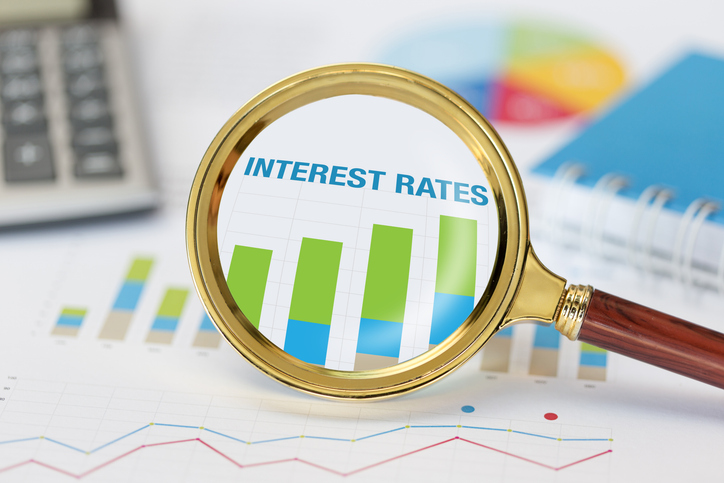Investors often purchase bonds for recurring income and as a hedge against stock market volatility. Most bonds are initially sold “at par,” which means that they’re sold at face value. After the original sale, the value of bonds fluctuates based on interest rates, the credit rating of the issuer and economic trends that affect interest rates. When a bond is sold below its face value, it is known as a “discount bond.” Let’s review what discount bonds are, how they’re affected by interest rates and how they compare to premium bonds. An experienced financial advisor can help you sort through the myriad of options available to fixed-income investors.
What Are Discount Bonds?
Bonds are debt obligations issued by corporations and government entities. They are typically issued at face value, and most are available in $1,000 increments. The durations of bonds can be as short as a month or as long as several decades. Investors receive or accrue interest payments throughout the duration or life of the bond, then receive the face value at maturity. However, many investors buy bonds and sell bonds in the secondary market before they mature.
When a bond is sold for less than face value, it is known as a discount bond. Bonds that are sold significantly below face value (usually 20% or more) are known as deep-discount bonds. Bond prices are listed as percentages. A $1,000 bond available at 95% can be purchased for $950. Prices below 100% signify that the bond is selling at a discount to its face value.
The annual coupon payment of a bond is the stated interest rate multiplied by the bond’s face value. A bond with a $40 annual coupon and a $1,000 face value has a stated yield of 4%. A bond’s current yield is the annual coupon divided by its current price. If the discount bond was trading at 95%, then its current yield would be 4.21% ($40 divided by $950).
How Interest Rates Affect Bond Prices

Once a bond is issued, its value “floats” based on internal and external factors that affect the issuer. These factors cause current interest rates to rise or fall, depending on the circumstances. When interest rates increase, the value of existing bonds decreases.
Say you own a $1,000 bond that pays a 4% interest rate. Similar new bonds are being issued at 5%. The value of your bond went down as interest rates increased. Why would an investor buy your bond at the face value of $1,000 to earn $40 of interest per year when newer bonds are offering $50 per year?
The value of a bond is discounted in the secondary market so that its current yield is comparable to the prevailing rate of newly issued bonds. As a discount bond gets closer to maturity, the value increases because investors receive its full face value when it matures, no matter how much – or little – they paid for it.
Differences Between Premium and Discount Bonds
The alternative to a discount bond is known as a premium bond. Bonds are sold at a premium (higher price) when they have a higher coupon rate than what is currently available in the market. Investors are willing to pay a premium for these bonds to earn a higher interest rate.
As with discount bonds, you have to do the math to determine the bond’s current yield. This will ensure that you’re not overpaying for that higher interest rate. The current yield formula is the annual coupon payment divided by the current market price.
Discount bonds trade below face value due to rising interest rates and concerns about credit quality. Premium bonds trade above face value because interest rates are falling or the issuer’s credit quality has improved since the bonds were issued.
Traders should not assume that a discount bond is bad or that a premium bond is good just because its value differs from the bond’s face value. You should analyze the investment further to determine why the price has changed and forecast how that may change between today and when it matures.
Pros and Cons of Discount Bonds
Discount bonds provide a unique investment opportunity, allowing investors to purchase securities at prices below their face value. These bonds can offer significant potential for gains, but come with risks that require thorough evaluation. Understanding the benefits and drawbacks can help you make an informed decision.
Pros of Discount Bonds
Discount bonds come with notable benefits that can appeal to a variety of investors. They offer opportunities for capital growth and flexibility, making them a strategic addition to an investment portfolio when chosen carefully. The following are some of the advantages:
- Potential for Capital Gains: Purchasing bonds at a discount to their face value offers the chance for greater returns when the bond matures or if sold before maturity. However, any gains are subject to taxation, which should be factored into your overall investment strategy.
- Flexible Maturity Options: The availability of both short-term and long-term discount bonds provides investors with options to match their financial goals and risk tolerance. Short-term bonds offer quicker returns, while long-term bonds may offer higher yields, albeit with greater exposure to interest rate and default risks.
- Regular Interest Payments: Many discount bonds still provide periodic interest payments, ensuring a steady income stream while you hold the bond. However, zero-coupon bonds are an exception, as they do not pay interest until maturity, which could be better suited for investors seeking lump-sum returns rather than periodic income.
Cons of Discount Bonds
While discount bonds can be appealing, they come with risks that need careful consideration. Understanding the potential downsides can help investors avoid common pitfalls and make better-informed decisions. Some of the cons of discount bonds are as follows:
- Creditworthiness Concerns: Discount bonds often originate from issuers with weaker credit ratings or financial distress. This increases the risk of default, where the issuer might fail to repay the principal. Researching the issuer’s financial stability is critical before committing to such investments.
- Potential Red Flags: Heavily discounted bonds may signal underlying problems. Issuers might be struggling financially, which could lead to issues like missed dividend payments or limited demand from other investors. Long-term bonds, in particular, may carry heightened risks, as they are more sensitive to interest rate changes and economic uncertainty.
Bottom Line

There are many types of bonds. Discount bonds are ones that are sold for less than face value. Bond prices fluctuate inversely with interest rates in the secondary market and to any issuer credit rating change. Bondholders receive the bond’s stated interest payment and, at maturity, its face value, regardless of what they paid for it. Before purchasing a discount bond determine why it’s selling at a discount by comparing its current yield against other bonds’ current yields and analyzing issuers’ financials to see if there’s a risk of a rating downgrade. Also, consider holding the bond until maturity to receive its full face value.
Tips for Investing in Bonds
- Consider talking to a financial advisor about whether bond funds or bonds have a place in your investment strategy. If you don’t have a financial advisor yet, finding one doesn’t have to be complicated. SmartAsset’s financial advisor matching tool makes it easy to find professional advisors in your local area. It takes just a few minutes to get your personalized advisor recommendations online. If you’re ready, then get started now.
- If you’re considering bond funds, take time to check the expense ratios as well as the bond’s overall investment strategy. Index funds, for example, may be appealing if you’re a buy-and-hold investor who’s looking for passive income generation. With any bond mutual fund or ETF, it’s also important to check the fund manager’s track record.
Photo credit: ©iStock.com/PashaIgnatov, ©iStock.com/cnythzl, ©iStock.com/visualspace
